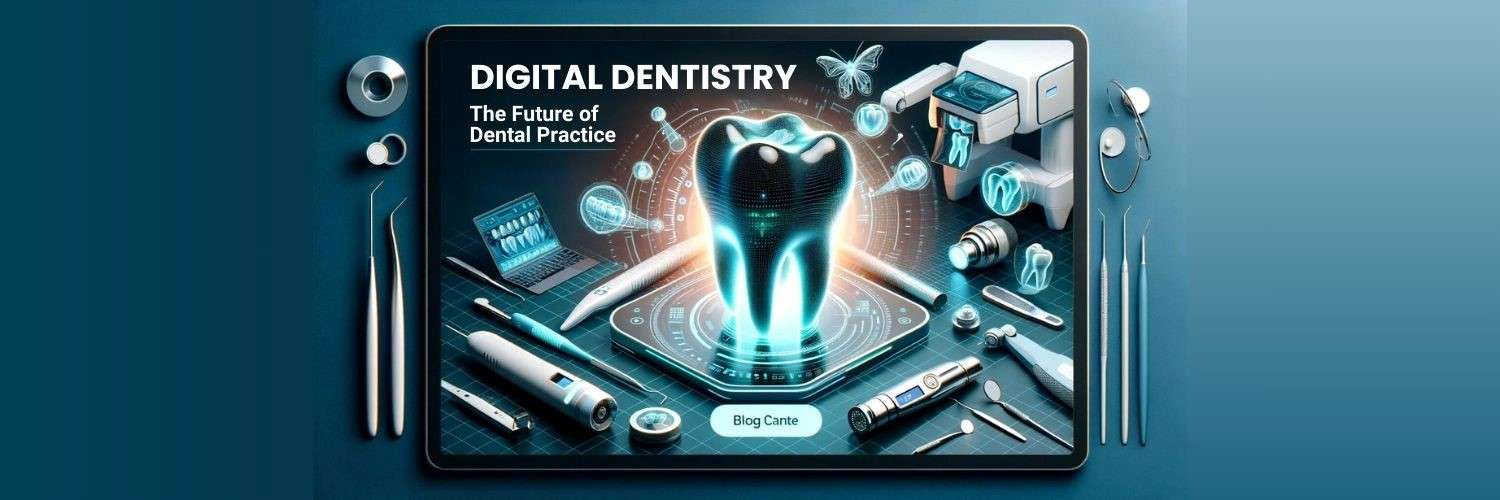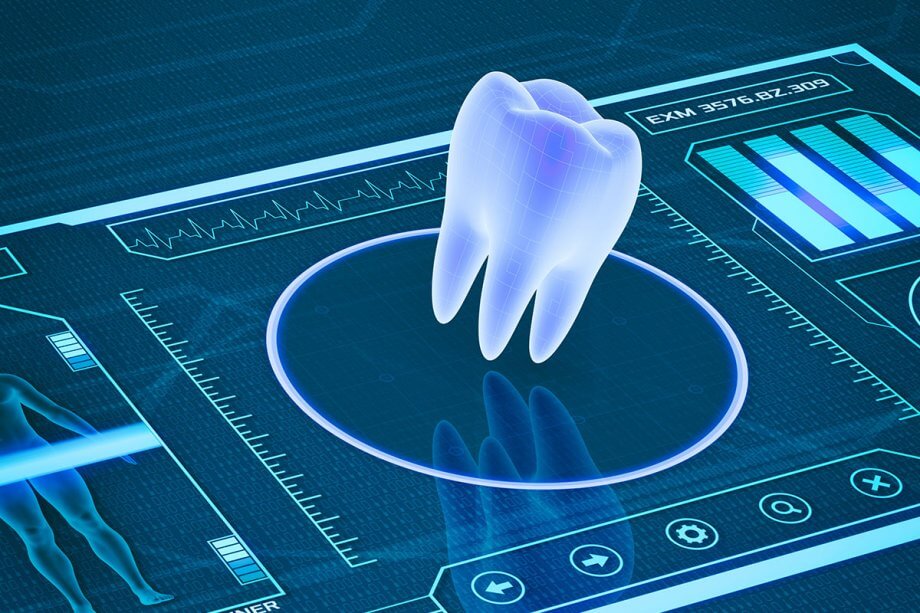Digital Dentistry and Technology: Transforming the Future of Dental Care
In recent years, digital dentistry has emerged as a game-changer in the dental world. By harnessing the power of cutting-edge technology, digital dentistry has revolutionized the way dental professionals diagnose, treat, and monitor patients. From advanced imaging systems to 3D printing and computer-aided design (CAD), technology is shaping the future of dental practice.
This article explores the benefits of digital dentistry, the technologies driving this innovation, and how patients and practitioners alike are benefiting from the latest advancements in the field.
What is Digital Dentistry?
Digital dentistry refers to the use of digital technologies in dental practices to enhance diagnostic accuracy, improve treatment outcomes, and streamline dental procedures. It involves using digital tools such as 3D imaging, CAD software, intraoral scanners, and laser technology to perform tasks that were once done manually.
Some of the key components of digital dentistry include:
- Intraoral Scanners: These devices allow dentists to take digital impressions of a patient’s teeth, eliminating the need for traditional, uncomfortable molds.
- CAD/CAM Technology: Computer-Aided Design (CAD) and Computer-Aided Manufacturing (CAM) technologies help create precise dental restorations, such as crowns, bridges, and veneers, in a fraction of the time.
- Digital X-rays: These provide high-resolution images that are more accurate and faster to process than traditional X-rays.
- 3D Printing: Used to create accurate dental models, guides, and prosthetics with high precision.
The Benefits of Digital Dentistry
1. Improved Accuracy
One of the most significant advantages of digital dentistry is the enhanced precision it offers. Traditional methods, such as taking impressions with messy dental molds, can lead to inaccuracies. In contrast, digital impressions taken using intraoral scanners are highly detailed and accurate, ensuring that restorations fit perfectly and reducing the likelihood of adjustments.
2. Faster Treatment Times
With CAD/CAM technology, dental restorations like crowns and veneers can be designed and manufactured in a single visit. This eliminates the need for multiple appointments and temporary restorations, which saves both time and money for both the patient and the dental practice.
Moreover, digital radiography produces immediate results, which means that dentists can diagnose and start treatment without delay. This efficiency also leads to shorter procedure times, reducing the time a patient spends in the dental chair.
3. Enhanced Patient Comfort
Traditional dental impressions can often be uncomfortable, especially for patients with sensitive gag reflexes. With digital scanning technology, the process is much more comfortable, with no need for messy putty or molds. The intraoral scanner is quick, precise, and more pleasant for the patient.
Additionally, laser treatments are becoming increasingly common, providing more comfortable options for procedures that used to involve scalpel and stitches. These technologies reduce discomfort and recovery time for patients.
4. Cost-Effective for Patients
While the upfront costs of incorporating digital technologies into a practice can be high, the long-term savings are significant. Digital tools can reduce the need for lab work, as many restorations can be created in-house. This streamlines the process and cuts down on material costs and labor expenses, which can be passed on as savings to the patient.
Moreover, digital treatments often require fewer follow-up visits, which reduces overall treatment costs. In-office 3D printing also offers an affordable way to produce dental models and surgical guides, further reducing costs for patients.
5. Personalized and Tailored Care
With digital tools, dentists can create customized treatment plans based on highly accurate 3D scans and models of the patient’s mouth. This allows for more personalized care, ensuring that treatments are designed to meet each patient’s unique needs.
Additionally, 3D printing and CAD/CAM technology allow for precise restorations that fit better, last longer, and look more natural than ever before. Whether it’s a crown, bridge, or implant, the precision of digital dentistry ensures optimal results.

Technologies Revolutionizing Digital Dentistry
Intraoral Scanners
Intraoral scanners are handheld devices used to capture detailed 3D images of a patient’s mouth. These scanners have replaced the traditional method of using impression molds, making the process faster, more comfortable, and more accurate. Dentists can use the digital scans to create crowns, bridges, and aligners with unparalleled precision.
These scanners can also be integrated with CAD software to design customized dental restorations in real time. This innovation allows for more efficient treatments, reducing the need for multiple appointments and ensuring better fitting restorations.
3D Printing
3D printing is one of the most exciting developments in digital dentistry. It allows dental professionals to create customized dental devices, such as crowns, dentures, and orthodontic aligners, directly from digital files. This technology provides several advantages:
- Rapid Prototyping: 3D printing enables quick production of dental devices, reducing the time it takes to deliver a final restoration.
- Customization: 3D printers can create highly personalized products based on digital scans of the patient’s mouth, improving comfort and fit.
- Reduced Costs: By eliminating the need for traditional dental labs, 3D printing can reduce the overall cost of dental procedures.
Digital X-rays
Traditional X-rays often require waiting for film development, which can delay diagnosis and treatment. Digital X-rays provide instant results, allowing dental professionals to make quicker decisions. Additionally, digital X-rays use less radiation, making them safer for patients.
These digital images can be easily stored and shared, enabling better communication between dental specialists and ensuring continuity of care.
Laser Dentistry
Laser technology has revolutionized many aspects of dental treatment, including gum reshaping, cavity detection, and teeth whitening. Laser dentistry is minimally invasive and often requires less recovery time than traditional methods.
Laser treatments can be used for:
- Tooth decay treatment: Lasers can target and remove decayed tissue without affecting the surrounding healthy tissue.
- Gum treatments: Lasers can treat gum disease by eliminating bacteria and promoting healing.
- Whitening treatments: Lasers can accelerate the bleaching process, leading to faster and more effective teeth whitening.
Artificial Intelligence (AI)
AI is beginning to play a significant role in dental diagnostics. By analyzing dental X-rays, AI can help detect early signs of tooth decay, gum disease, and other oral health issues. AI algorithms can also predict patient outcomes and assist in creating personalized treatment plans based on historical data and patient preferences.
How Digital Dentistry Improves Patient Experience
Enhanced Communication
Digital tools make it easier for dentists to communicate with their patients. Digital images and 3D models can be shown to the patient in real-time, allowing them to better understand their condition and the proposed treatment options. This visual communication empowers patients to make informed decisions about their dental care.
Convenience and Efficiency
With digital dentistry, many treatments that used to require multiple appointments can now be completed in a single visit. For example, CAD/CAM technology allows for same-day crowns, while intraoral scanning eliminates the need for impressions. Patients benefit from faster procedures, fewer appointments, and less discomfort, which makes the overall dental experience much more convenient and efficient.
FAQs about Digital Dentistry
Q1: Is digital dentistry more expensive than traditional dentistry?
A1: Initially, digital dentistry may have higher startup costs for dental practices due to the price of equipment. However, over time, it can reduce overall costs by streamlining procedures, reducing the need for lab work, and decreasing the number of patient visits required. Many practices pass these savings on to patients.
Q2: Is digital dentistry safe?
A2: Yes, digital dentistry is safe. Digital X-rays use less radiation than traditional X-rays, and laser treatments are minimally invasive with minimal risk of infection. Digital tools provide greater precision, leading to more effective and less risky treatments.
Q3: How does digital dentistry benefit orthodontics?
A3: Digital technologies, such as intraoral scanners and 3D printing, have revolutionized orthodontics by allowing for more precise measurements and better-fitting aligners. These tools can also accelerate the treatment process, resulting in quicker and more effective outcomes for patients.
Q4: Can digital dentistry improve the accuracy of dental implants?
A4: Yes, digital dentistry plays a crucial role in dental implants by providing highly accurate 3D imaging. Digital planning ensures precise placement of implants, improving the overall success rate and reducing the risk of complications.
Q5: Will digital dentistry replace traditional methods entirely?
A5: While digital dentistry offers many benefits, traditional methods are still used in some cases. However, as digital technology continues to evolve, it is likely to become the standard in many dental practices, offering improved outcomes and patient experiences.
Conclusion
The advent of
digital dentistry has transformed the dental industry, offering patients more precise, faster, and more comfortable treatments. Technologies like 3D imaging, intraoral scanners, and CAD/CAM are not only improving the accuracy and efficiency of dental procedures but also enhancing the overall patient experience.
As these technologies continue to evolve, digital dentistry is expected to become even more integrated into everyday dental care, helping dental professionals deliver better outcomes and ensuring that patients receive the highest quality of care.
The future of dental care is here, and it is digital. If you’re ready to experience the benefits of digital dentistry, schedule a consultation with a qualified dental professional today.

For more information on innovative dental technologies, visit 3Shape.


